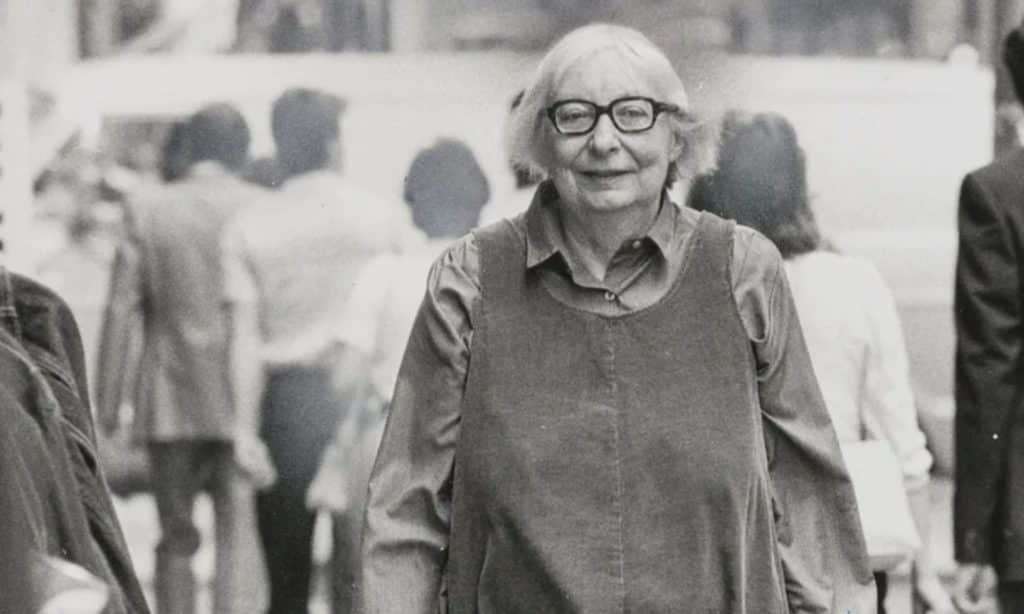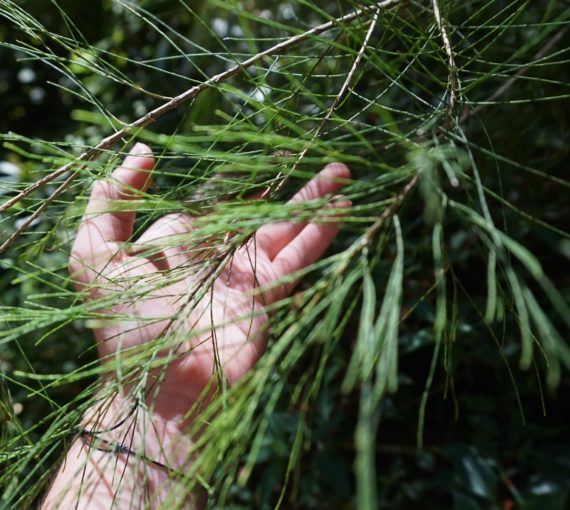
In working to preserve the Greenbelt, Gideon Forman is reminded of his late next-door neighbour, activist Jane Jacobs (Photo: Nancy Ackerman via The Globe and Mail)
As a boy growing up in Toronto’s Annex neighbourhood in the 1970s, I lived next door to the renowned activist and author Jane Jacobs. Her house was located at 69 Albany Ave. – I lived at No. 67. I recall Jane, who passed away in 2006, with fondness and gratitude.
Each year, she opened her home for a neighbourhood feast. I remember the suckling pig with an apple in its mouth. I don’t eat pork, but she always provided lamb for her Jewish guests.
She occasionally travelled by automobile, but hers was so diminutive it made a Volkswagen Beetle seem spacious. Most of the time it was parked in our mutual driveway.
Jane was a pedestrian. My classic memory has her hiking up Albany in her denim dress or farmer’s overalls. She would stop when she had an idea and write it down. Then she’d continue walking, pulling along her bundle buggy.
At some point, Jane ordered a Flying Pigeon-brand bicycle which arrived at her house in a large wooden crate. She hauled the crate up to the summit of her flat roof and filled it with sawdust (soil would be too heavy), in order to create a vegetable garden. Next to it, she placed a barrel containing water and nutrients. From wooden stakes, she hung aluminum pie plates to keep away the squirrels (raccoons were not yet a force.) Atop her house grew a swaying cornfield.
I’ve been thinking of Jane recently because of her successful fight in the 1960s and early 70s to halt the Spadina Expressway. I often ramble through Toronto’s Cedarvale Ravine, which the proposed expressway would have crushed. What did Jane and her generation save?
They preserved the possibility of cattails growing in the ravine’s wetland, the blackbird with its splash of red at the shoulder. Occasionally on my walks, I’m joined by rabbits. They spring from the bushes onto the gravel trail and sit, sniffing. Over the marsh float Cooper’s hawks. I understand coyotes run through here. Toads breed in a nearby pond.
But Jane and her companions protected more than wildlife. By sparing a complicated, organic ecosystem in midtown Toronto, they also saved the city from monotony. They saved a forest and its disregard for the linear; a valley spilling through the neighbourhood. When you enter the Cedarvale woodlands on the south end near St. Clair Avenue and proceed diagonally northwest, you can snake your way up to Eglinton Avenue. It’s good for urbanites to see there’s a way through the world besides the perpendicular pattern of streets.
Jane and her companions protected more than wildlife. By sparing a complicated, organic ecosystem in midtown Toronto, they also saved the city from monotony.
Jane’s efforts enhanced the sacred. Each year at Rosh Hashanah, members of my synagogue follow our rabbi through the ravine and toss bits of bread into the moving water. We symbolically cast away our sins. The expressway’s cancellation made possible the life of this little midtown creek and its mint aroma; its ability to offer places of worship.
Today I’m involved, with many others, in a campaign to cancel the construction of southern Ontario’s proposed Highway 413. I think Jane would endorse our efforts.
A Spadina Expressway through Toronto’s heartland would have maimed the city and robbed us of the consolations of trees and streams. It would have incentivized car use and weakened ridership on public transit. Likewise, 413 would pave and defile swaths of countryside, destroy birdlife and birdsong and raise the planet’s already feverish temperature. It would vastly extend the reign of private gas-burning vehicles.
If there is something called a generational task, surely one of ours is building a shield over things of outstanding beauty. In museums, we guard paintings and sculptures; in libraries, works of literature. Don’t we owe similar protection to nature?
In museums, we guard paintings and sculptures; in libraries, works of literature. Don’t we owe similar protection to nature?
Jane and her contemporaries were called upon to save Toronto then, as we are called upon to save the Greenbelt now.
The 413 is our generation’s Spadina Expressway. The Greenbelt is our Cedarvale Ravine.
This op-ed was originally published in The Globe and Mail.
Our work
Always grounded in sound evidence, the David Suzuki Foundation empowers people to take action in their communities on the environmental challenges we collectively face.



